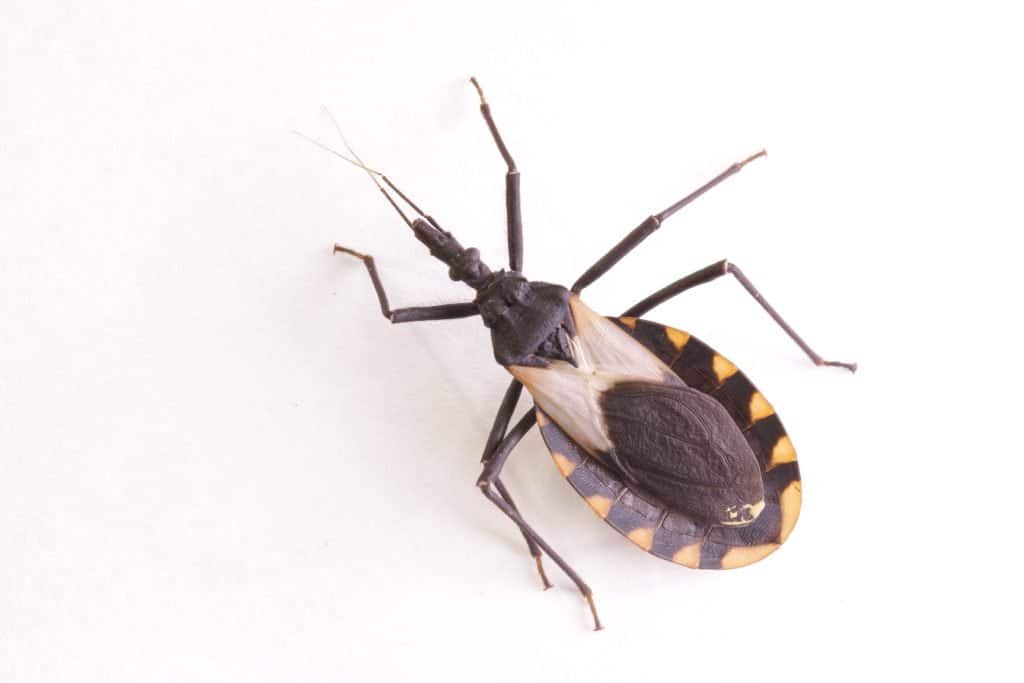Although this may sound like an insect made for Valentine’s Day or a Hallmark movie, it in fact is not. Kissing Bugs are not a pest you want in your home or office, and they earned their name because they will bite humans near their lips while they sleep, and suck their blood while doing so. No one wants to be bitten on their face, or near their mouth, but the worst part is the insect’s habit of defecating on the bite when it’s done feeding. This additional bacteria may sometimes contain harmful parasites that can be passed along to humans.
Kissing Bugs are attracted to carbon dioxide, which is what we breathe out of our mouth and nose when we sleep, which is why the pest is attracted to these areas.
What do Kissing Bugs Look Like?
This pest is dark brown or black with either red or orange spots on the edge of the body and grows to half and inch to an inch in length. Sometimes they’re called assassin bugs, but they’re most popular name is the Kissing Bug because of where they bite people on the face.
Where to Find Kissing Bugs
Kissing Bugs prefer warm clients, such as Alabama. Their slim bodies make them great at sneaking indoors through small cracks between doors, foundations, windows, etc. Once inside, they’re most likely found near pet beds, human beds and bedding, nightstands and any other furniture or curtains near where people or animals sleep. Remember, they’re attracted to carbon dioxide, which we exhale.
Kissing Bug Bites
The bites from Kissing Bugs often look like hives and can be itchy. The bites generally last a week, but it’s a good idea to consult a health care professional if the area seems infected is not getting better within a few days.
Controlling Kissing Bugs
Unfortunately, this pest can be difficult to exterminate because they’re experts at hiding in cracks and small spaces, such as a bed frame. They can also lay eggs in these tiny areas.
To prevent Kissing Bugs or other pests from entering your home or office, it’s a good idea to seal any gaps around windows and doors and remove any debris along the side of the house, such as woodpiles or garden debris.
If you see Kissing Bugs or suspect them indoors, contact United Pest & Turf Control and one of our trained and licensed technicians will research the problem and offer an effective treatment option. In some cases, more than one treatment may be necessary to fully remove any signs of Kissing Bugs.
What are Kissing Bugs in North Alabama and Southern Tennessee?
Serving North Central Alabama and South Central Tennessee
Limestone County
Ardmore
Home » What are Kissing Bugs?


